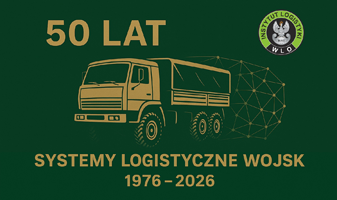ORIGINAL PAPER
Military logistics - from military sciences for the science of management and quality
1
Akademia Sztuki Wojennej, Wydział Zarządzania i Dowodzenia, Instytut Logistyki
A - Research concept and design; B - Collection and/or assembly of data; C - Data analysis and interpretation; D - Writing the article; E - Critical revision of the article; F - Final approval of article
Submission date: 2021-09-24
Acceptance date: 2021-12-20
Publication date: 2021-12-31
Corresponding author
Tomasz Jałowiec
Instytut Logistyki, Akademia Sztuki Wojennej; Wydział Zarządzania i Dowodzenia;, Chruściela 103, 00-910, Warszawa, Polska
Instytut Logistyki, Akademia Sztuki Wojennej; Wydział Zarządzania i Dowodzenia;, Chruściela 103, 00-910, Warszawa, Polska
SLW 2021;55(2):37-48
KEYWORDS
TOPICS
ABSTRACT
Despite the dynamic changes taking place inside the armed forces and in their external environment, the essence of knowledge and areas of interest in military logistics have remained virtually unchanged for years. The modern, interdisciplinary nature of military logistics is the result of its long-term evolution over the years in many scientific disciplines, the leading of which were: military sciences, technical sciences, management, economics and qualitology. Currently, many arguments indicate that the discipline of management and quality science in the epistemological and ontological dimensions shows the closest cognitive connections with the subject of military logistics research.
The aim of the article is to identify and evaluate the evolution of military logistics as a specialty of military science and management and quality sciences. The research problem undertaken has been specified as follows: What influence has its evolution from military sciences to management and quality sciences had on the contemporary, interdisciplinary dimension of military logistics? The material uses a number of methods, the leading of which were: analysis and synthesis, querying the literature on the subject, abstraction and inference. As an empirical method, the method of diagnostic survey with the use of the expert interview technique was used. The adopted approach made it possible to obtain a cross-sectional character of the considerations, at the same time providing the basis for further, extended research on this extremely important and current problem.
Share
RELATED ARTICLE
We process personal data collected when visiting the website. The function of obtaining information about users and their behavior is carried out by voluntarily entered information in forms and saving cookies in end devices. Data, including cookies, are used to provide services, improve the user experience and to analyze the traffic in accordance with the Privacy policy. Data are also collected and processed by Google Analytics tool (more).
You can change cookies settings in your browser. Restricted use of cookies in the browser configuration may affect some functionalities of the website.
You can change cookies settings in your browser. Restricted use of cookies in the browser configuration may affect some functionalities of the website.


